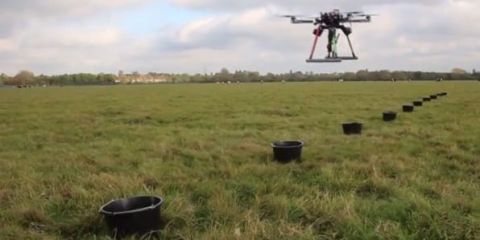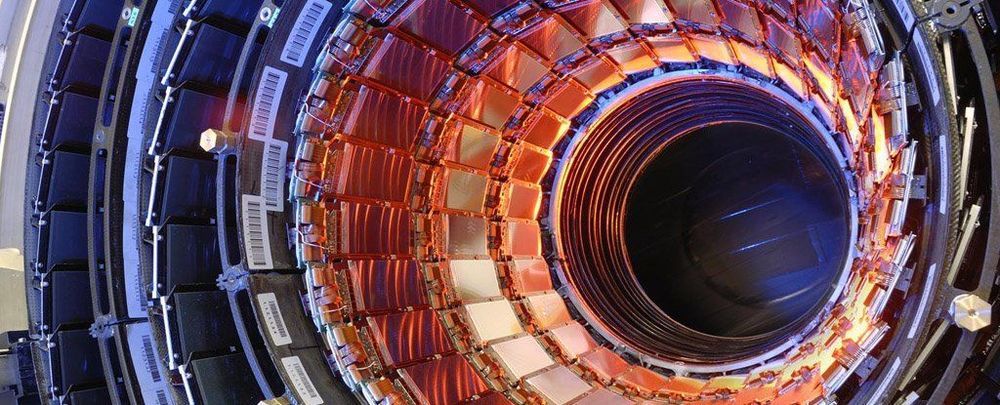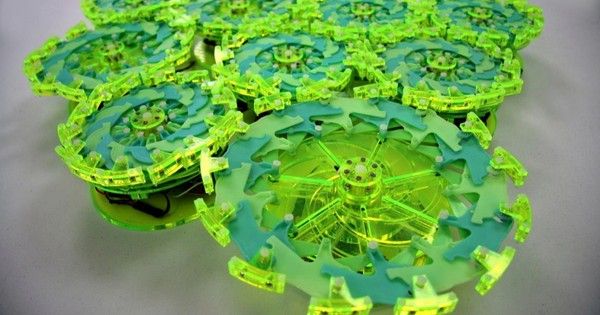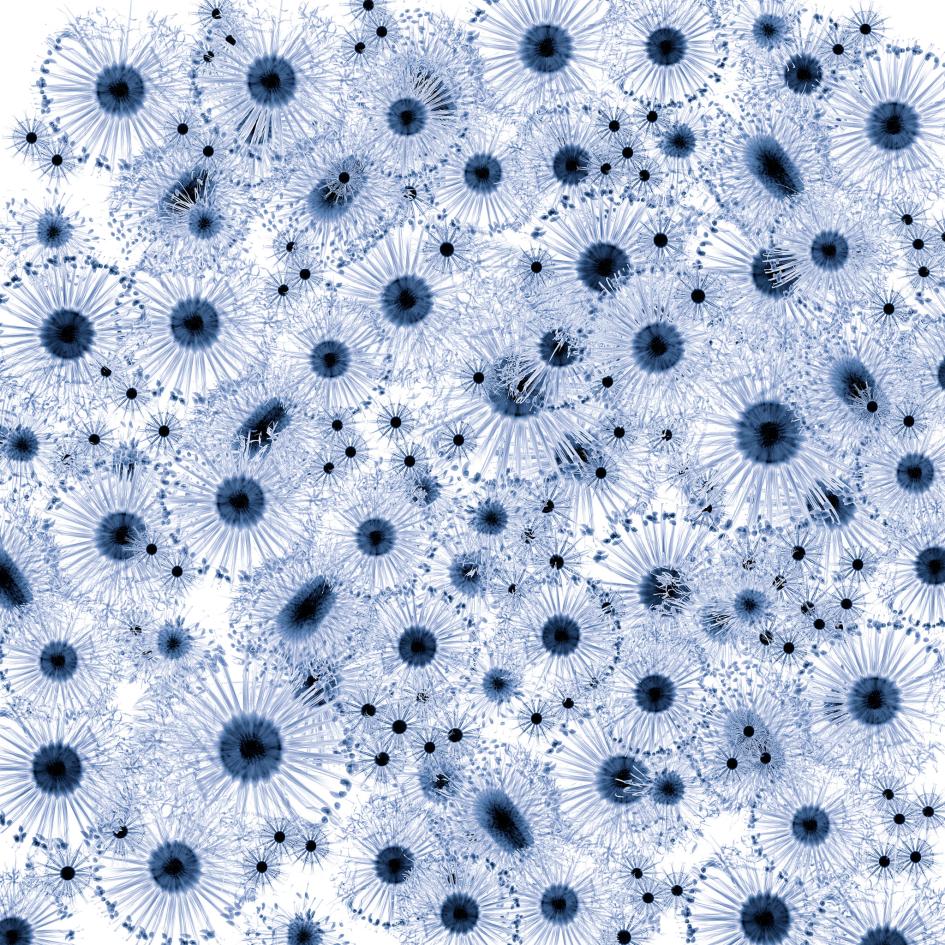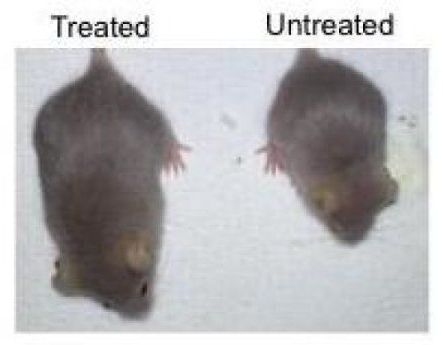Page 8556
Mar 22, 2019
Drones: the future of ocean conservation
Posted by Quinn Sena in categories: drones, robotics/AI
Unmanned systems like drones significantly change the way ocean conservation scientists collect data, monitor species and protect the ocean.
Mar 22, 2019
These drones plant trees
Posted by Quinn Sena in categories: business, climatology, drones, engineering, habitats, robotics/AI, sustainability
Climate change is a sprawling, complex problem. But there is an astonishingly simple way to make a difference: plant more trees. Trees scrub pollution from the air, reduce erosion, improve water quality, provide homes for animals and insects, and enhance our lives in countless other ways.
It turns out that ecosystem restoration is also an emerging business opportunity. A new report from the World Resources Institute and the Nature Conservancy says governments around the world have committed to reviving nearly 400 million acres of wilderness — an area larger than South Africa. As countries push to regrow forests, startups are dreaming up new, faster ways to plant trees. For some innovators, like NASA veteran Dr. Lauren Fletcher, that means using drones.
Fletcher said his conversion from stargazer to eco-warrior was driven by his worry about climate change, which has been dramatically worsened by deforestation. To tackle the problem, he created BioCarbon Engineering, which he describes as an ecosystem restoration company. Working with colleagues, he came up with a 30-pound unmanned aerial vehicle nicknamed “Robin.” It can fly over the most rugged landscapes on earth, planting trees in precise locations at the rate of 120 per minute.
Mar 22, 2019
Unmanned Systems Grow in European Agriculture
Posted by Quinn Sena in categories: business, drones, food, robotics/AI, sustainability
Unmanned systems’ global inroads are including European agriculture. GNSS for precision guidance of tractors and harvesters is already in place. More recent innovations include fully driverless and smart systems, while drones remain poised to fly.
The experience of one Dutch company is instructive. Precision Makers is an up-and- coming manufacturer of automated farm systems. The company delivers two main products. One, a conversion kit called X-Pert, turns existing mowers and tractors into driverless machines. The other is a fully robotized, unmanned vehicle called Greenbot. Both systems enable automated precision operations, but while one has been successful in terms of sales, the other has not.
Precision Makers Business Development Director, Allard Martinet, told Inside Unmanned Systems, “Sales of our X-Pert conversion system have been very good. We started in 2008, first converting the Toro golf course mower, and then we expanded that into solutions for other vehicles. Today, there are more than 150 X-Pert converted vehicles running.”
Continue reading “Unmanned Systems Grow in European Agriculture” »
Mar 22, 2019
Everything automated – Farming in 5G
Posted by Quinn Sena in categories: food, internet, robotics/AI
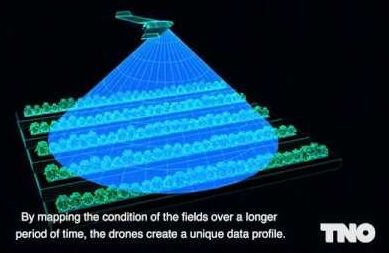
Agriculture becomes very easy when data controls the machines. 5G makes this possible because everything is connected. Explore your life in 5G! 5glife.tno.nl
Mar 22, 2019
CERN Just Got Closer to Figuring Out Why Antimatter Hasn’t Annihilated Everything
Posted by Shailesh Prasad in categories: cosmology, particle physics
Why do we exist? This is arguably the most profound question there is and one that may seem completely outside the scope of particle physics.
But our new experiment at CERN’s Large Hadron Collider has taken us a step closer to figuring it out.
To understand why, let’s go back in time some 13.8 billion years to the Big Bang. This event produced equal amounts of the matter you are made of and something called antimatter.
Mar 22, 2019
See Volkswagen’s new electric beach buggy
Posted by Shailesh Prasad in category: transportation

Volkswagen’s iconic dune buggy could be making a comeback, only this time it’s electric. The ID Buggy concept car has no doors, no side or back windows and only fittings for a simple cloth roof. https://cnn.it/2TCLyBL
Mar 22, 2019
Robots: Five ground-breaking new inventions
Posted by Genevieve Klien in categories: innovation, robotics/AI
Mar 22, 2019
These x-rays of seeds turn biology into art
Posted by Genevieve Klien in category: biological
In her project Archiving Eden, photographer Dornith Doherty explores the beauty and necessity of the world’s botanical stockpiles.
Mar 22, 2019
CRISPR/Cas9 therapy can suppress aging, enhance health and extend life span in mice
Posted by Quinn Sena in categories: biotech/medical, genetics, life extension
The findings, published on February 18, 2019 in the journal Nature Medicine, highlight a novel CRISPR/Cas9 genome-editing therapy that can suppress the accelerated aging observed in mice with Hutchinson-Gilford progeria syndrome, a rare genetic disorder that also afflicts humans. This treatment provides important insight into the molecular pathways involved in accelerated aging, as well as how to reduce toxic proteins via gene therapy.
“Aging is a complex process in which cells start to lose their functionality, so it is critical for us to find effective ways to study the molecular drivers of aging,” says Juan Carlos Izpisua Belmonte, a professor in Salk’s Gene Expression Laboratory and senior author of the paper. “Progeria is an ideal aging model because it allows us to devise an intervention, refine it and test it again quickly.”
With an early onset and fast progression, progeria is one of the most severe forms of a group of degenerative disorders caused by a mutation in the LMNA gene. Both mice and humans with progeria show many signs of aging, including DNA damage, cardiac dysfunction and dramatically shortened life span. The LMNA gene normally produces two similar proteins inside a cell: lamin A and lamin C. Progeria shifts the production of lamin A to progerin. Progerin is a shortened, toxic form of lamin A that accumulates with age and is exacerbated in those with progeria.
